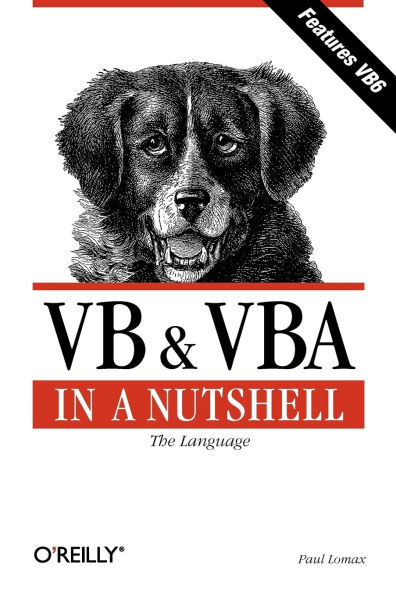VB & VBA in a Nutshell: The Language: The Language
The online documentation of VB/VBA language components seems to follow the 80/20 rule: the basic facts that you need to use a language statement are provided in the documentation. But the additional 20 percent that you need to use it effectively or to apply it to special cases is conspicuously absent. To a professional VB/VBA programmer, though, this missing 20 percent of the language's documentation isn't a luxury, it's a necessity. And in VB & VBA in a Nutshell: The Language, it finally is available. The bulk of the book consists of an alphabetical reference to the statements, procedures, and functions of the VB/VBA language. Each entry has a standardized listing containing the following information:
1140203604
- Its syntax, using standard code conventions
- Differences in the operation of the keyword in a macro environment (e.g., in Office) and in Visual Basic, if there are any
- A list of arguments accepted by the function or procedure, if any
- A description of the data type returned by a function
- The finer points of a keyword's usage that are often omitted from or blurred over by the documentation
- Tips and gotchas that include undocumented behaviors and practical applications for particular language elements — a section particularly invaluable for diagnosing or avoiding potential programming problems
- A brief, nonobvious example that illustrates the use of the keyword
- Basic VBA programming concepts, such as its data types and its support for variables, constants, and arrays
- Error handling in VBA applications
- Object programming with VBA
- Using VBA with particular applications. Excel and Project are utilized to show how to work with an application's integrated development environment and to take advantage of its object model Regardless of how much experience you have programming with VBA, this is the book you'll pick up time and time again both as your standard reference guide and as a tool for troubleshooting and identifying programming problems.
VB & VBA in a Nutshell: The Language: The Language
The online documentation of VB/VBA language components seems to follow the 80/20 rule: the basic facts that you need to use a language statement are provided in the documentation. But the additional 20 percent that you need to use it effectively or to apply it to special cases is conspicuously absent. To a professional VB/VBA programmer, though, this missing 20 percent of the language's documentation isn't a luxury, it's a necessity. And in VB & VBA in a Nutshell: The Language, it finally is available. The bulk of the book consists of an alphabetical reference to the statements, procedures, and functions of the VB/VBA language. Each entry has a standardized listing containing the following information:
- Its syntax, using standard code conventions
- Differences in the operation of the keyword in a macro environment (e.g., in Office) and in Visual Basic, if there are any
- A list of arguments accepted by the function or procedure, if any
- A description of the data type returned by a function
- The finer points of a keyword's usage that are often omitted from or blurred over by the documentation
- Tips and gotchas that include undocumented behaviors and practical applications for particular language elements — a section particularly invaluable for diagnosing or avoiding potential programming problems
- A brief, nonobvious example that illustrates the use of the keyword
- Basic VBA programming concepts, such as its data types and its support for variables, constants, and arrays
- Error handling in VBA applications
- Object programming with VBA
- Using VBA with particular applications. Excel and Project are utilized to show how to work with an application's integrated development environment and to take advantage of its object model Regardless of how much experience you have programming with VBA, this is the book you'll pick up time and time again both as your standard reference guide and as a tool for troubleshooting and identifying programming problems.
39.99
In Stock
5
1

VB & VBA in a Nutshell: The Language: The Language
650
VB & VBA in a Nutshell: The Language: The Language
650Paperback
$39.99
39.99
In Stock

Product Details
| ISBN-13: | 9781565923584 |
|---|---|
| Publisher: | O'Reilly Media, Incorporated |
| Publication date: | 10/28/1998 |
| Series: | In a Nutshell (O'Reilly) |
| Pages: | 650 |
| Product dimensions: | 6.00(w) x 9.00(h) x 1.50(d) |
About the Author
From the B&N Reads Blog
